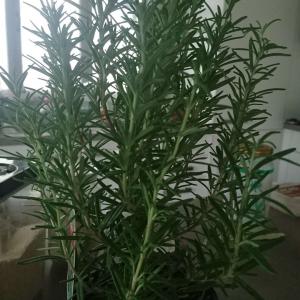文章
Miss Chen
2017年11月17日

Although easy to grow as an annual in the United States, the tomato plant (Lycopersicon esculentum) is, unfortunately, vulnerable to a wide variety of diseases. Choosing disease-resistant varieties, spacing plants adequately and keeping garden soil free of debris will help to prevent many common problems. Knowing how to spot symptoms of bacterial or fungal infection will make disease identification and control easier.

Early Blight
This fungal disease is caused by Alternaria solani and triggered by periods of heavy rain combined with increasing temperatures at midseason. Also known as foliar or stem disorder, it is characterized by brownish-black lesions surrounded by halos of yellowing leaf tissue, which together form a bull's-eye pattern. Signs of infection typically appear in older leaves lower on the stem first, followed by angry-looking dark spots near the stem end of the fruit. Address the disease by promptly removing infected leaves, and avoid overwatering container-grown plants or overhead irrigation in the greenhouse, which encourages disease spread. For severe infestations, apply a premixed copper fungicide spray to all parts of the plant every seven to 10 days and again after it rains. Ideally, there should be a 12-hour window of dry weather after each application.
Bacterial Wilt
The Ralstonia solanacearum bacteria invades small breaks in the roots and self-replicates in the cellular walls of the plant, displacing stored water with a white or yellowish slimy substance. The earliest sign of this disease is the wilting of a few lower leaves. As the bacteria spread, the entire plant will be affected and die, often quite suddenly with high temperatures and humidity. There are no chemical controls for this disease, so infected plants must be pulled and destroyed. The best remedy is crop rotation with plants less susceptible to bacterial wilt, such as common beans (Phaseolus vulgaris), cabbage (Brassica oleracea) and corn (Zea mays), for at least three years. Meanwhile, consider growing tomatoes in containers with sterilized potting soil or in a different location in raised beds to improve drainage.
Fusarium Diseases
Fusarium oxysporum is a tomato fungus that causes Fusarium wilt. Symptoms begin with yellowing and drooping of older leaves, sometimes on only one side of the plant. The same fungus is also responsible for Fusarium crown rot, in which leaves turn black and a "canker" appears at the stem base. Infected plants wilt and die because the fungus permeates vascular tissue, where it blocks the conduction of water.

Because there are no fungicides that treat these diseases and the fungus can persist in the soil for two or three years, rotation with a cover crop in the grass family or another vegetable is the only remedy for this garden space. Plants that are less vulnerable to Fusarium include corn, some varieties of peas (Pisum sativum) and romaine lettuce (Lactuca sativa) cultivars. In terms of prevention, try to purchase certified disease-free or Fusarium-resistant tomato plants to start with. Also, increasing the pH of the soil to between 6.5 and 7.0 will deter development of these diseases.
Leaf Mold
Leaf mold, caused by the fungus Passalora fulva, produces yellow lesions on the upper side of older leaves lower to the ground. With high humidity, a grayish velvetlike coating may appear, which consists of fungal spores. Leaf mold may spread to stems, flowers and fruit, producing a black rot at the stem end of tomatoes. Prevention and control involves staking of plants to enhance air circulation and the use of premixed liquid copper fungicide spray. Apply fungicide to the entire plant at the first sign of leaf mold; reapply at seven- to 10-day intervals and after a heavy rain.
Special Considerations
The use of fungicides can be harmful to bees and other pollinating insects, although spraying at night minimizes impact. A time-honored alternative to treating tomato plant diseases is a mixture of 1 part skim milk to 9 parts water applied as a spray every two to three weeks during the growing season. Reconstituted powdered milk may be used instead, but avoid whole milk because the fat may clog the sprayer.

Early Blight
This fungal disease is caused by Alternaria solani and triggered by periods of heavy rain combined with increasing temperatures at midseason. Also known as foliar or stem disorder, it is characterized by brownish-black lesions surrounded by halos of yellowing leaf tissue, which together form a bull's-eye pattern. Signs of infection typically appear in older leaves lower on the stem first, followed by angry-looking dark spots near the stem end of the fruit. Address the disease by promptly removing infected leaves, and avoid overwatering container-grown plants or overhead irrigation in the greenhouse, which encourages disease spread. For severe infestations, apply a premixed copper fungicide spray to all parts of the plant every seven to 10 days and again after it rains. Ideally, there should be a 12-hour window of dry weather after each application.
Bacterial Wilt
The Ralstonia solanacearum bacteria invades small breaks in the roots and self-replicates in the cellular walls of the plant, displacing stored water with a white or yellowish slimy substance. The earliest sign of this disease is the wilting of a few lower leaves. As the bacteria spread, the entire plant will be affected and die, often quite suddenly with high temperatures and humidity. There are no chemical controls for this disease, so infected plants must be pulled and destroyed. The best remedy is crop rotation with plants less susceptible to bacterial wilt, such as common beans (Phaseolus vulgaris), cabbage (Brassica oleracea) and corn (Zea mays), for at least three years. Meanwhile, consider growing tomatoes in containers with sterilized potting soil or in a different location in raised beds to improve drainage.
Fusarium Diseases
Fusarium oxysporum is a tomato fungus that causes Fusarium wilt. Symptoms begin with yellowing and drooping of older leaves, sometimes on only one side of the plant. The same fungus is also responsible for Fusarium crown rot, in which leaves turn black and a "canker" appears at the stem base. Infected plants wilt and die because the fungus permeates vascular tissue, where it blocks the conduction of water.

Because there are no fungicides that treat these diseases and the fungus can persist in the soil for two or three years, rotation with a cover crop in the grass family or another vegetable is the only remedy for this garden space. Plants that are less vulnerable to Fusarium include corn, some varieties of peas (Pisum sativum) and romaine lettuce (Lactuca sativa) cultivars. In terms of prevention, try to purchase certified disease-free or Fusarium-resistant tomato plants to start with. Also, increasing the pH of the soil to between 6.5 and 7.0 will deter development of these diseases.
Leaf Mold
Leaf mold, caused by the fungus Passalora fulva, produces yellow lesions on the upper side of older leaves lower to the ground. With high humidity, a grayish velvetlike coating may appear, which consists of fungal spores. Leaf mold may spread to stems, flowers and fruit, producing a black rot at the stem end of tomatoes. Prevention and control involves staking of plants to enhance air circulation and the use of premixed liquid copper fungicide spray. Apply fungicide to the entire plant at the first sign of leaf mold; reapply at seven- to 10-day intervals and after a heavy rain.
Special Considerations
The use of fungicides can be harmful to bees and other pollinating insects, although spraying at night minimizes impact. A time-honored alternative to treating tomato plant diseases is a mixture of 1 part skim milk to 9 parts water applied as a spray every two to three weeks during the growing season. Reconstituted powdered milk may be used instead, but avoid whole milk because the fat may clog the sprayer.
0
0
文章
Miss Chen
2017年11月17日

Tomatoes (Solanum lycopersicum) are garden annuals that produce the most fruit when temperatures are within a specific range. For Virginia gardeners, this means the ideal time to plant tomatoes is in a window in spring that takes advantage of the plants' temperature preferences.

Beat the Heat
To grow well and best produce fruit, tomatoes need warm weather, but temperatures that are too high have the opposite effect and hinder the plants' fruit production. When daytime temperatures are above 90 degrees Fahrenheit and nighttime temperatures are above 70 F, plants may fail to set fruit.
Consequently, the ideal time to set tomato transplants in a Virginia garden is as early as possible so that the plants have time to produce an adequate crop before the hottest part of the summer, when high temperatures are likely to slow fruit production. However, tomato plants are frost sensitive, so they can't be set out before the last frost in the spring.
In Virginia, the range of typical planting dates for tomatoes begins at the date of the last expected frost and extends for approximately the next seven weeks, a schedule that has the harvest period beginning as early as mid-June in the warmest parts of the state.
Last Frost Dates
The Tidewater region of eastern Virginia has the earliest frost-free dates in the state, with an average date of the last spring frost falling between April 10 and April 21. The Piedmont region of central Virginia is next; here the average date of the last frost is between April 20 and April 30. The Mountain region in the west has the latest frost-free dates; in this region, the average date of the last frost comes between May 10 and May 15.

Planting Dates
Given these frost dates, the range of acceptable planting dates in the Tidewater region is between April 10 and May 30. In the Piedmont, the range lies between April 20 and June 9, and in the Mountain region, the range is between May 10 and the end of June.
Planting early within these ranges gives tomato plants the best chance of producing a good crop before the onset of midsummer heat, but it also exposes transplants to the danger of a late frost at the beginning of the season.

Beat the Heat
To grow well and best produce fruit, tomatoes need warm weather, but temperatures that are too high have the opposite effect and hinder the plants' fruit production. When daytime temperatures are above 90 degrees Fahrenheit and nighttime temperatures are above 70 F, plants may fail to set fruit.
Consequently, the ideal time to set tomato transplants in a Virginia garden is as early as possible so that the plants have time to produce an adequate crop before the hottest part of the summer, when high temperatures are likely to slow fruit production. However, tomato plants are frost sensitive, so they can't be set out before the last frost in the spring.
In Virginia, the range of typical planting dates for tomatoes begins at the date of the last expected frost and extends for approximately the next seven weeks, a schedule that has the harvest period beginning as early as mid-June in the warmest parts of the state.
Last Frost Dates
The Tidewater region of eastern Virginia has the earliest frost-free dates in the state, with an average date of the last spring frost falling between April 10 and April 21. The Piedmont region of central Virginia is next; here the average date of the last frost is between April 20 and April 30. The Mountain region in the west has the latest frost-free dates; in this region, the average date of the last frost comes between May 10 and May 15.

Planting Dates
Given these frost dates, the range of acceptable planting dates in the Tidewater region is between April 10 and May 30. In the Piedmont, the range lies between April 20 and June 9, and in the Mountain region, the range is between May 10 and the end of June.
Planting early within these ranges gives tomato plants the best chance of producing a good crop before the onset of midsummer heat, but it also exposes transplants to the danger of a late frost at the beginning of the season.
0
0





















